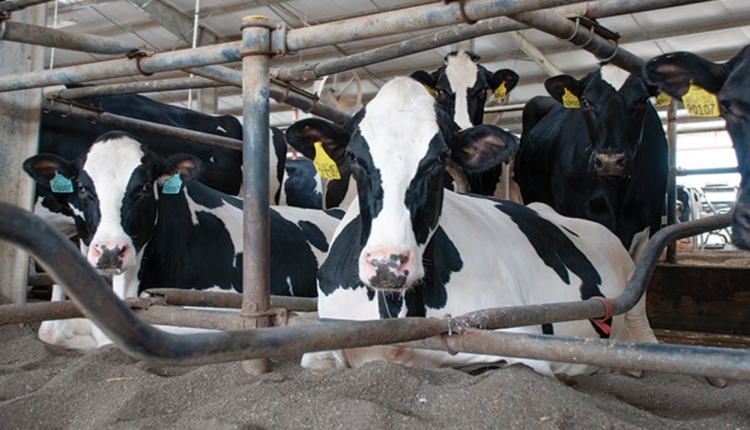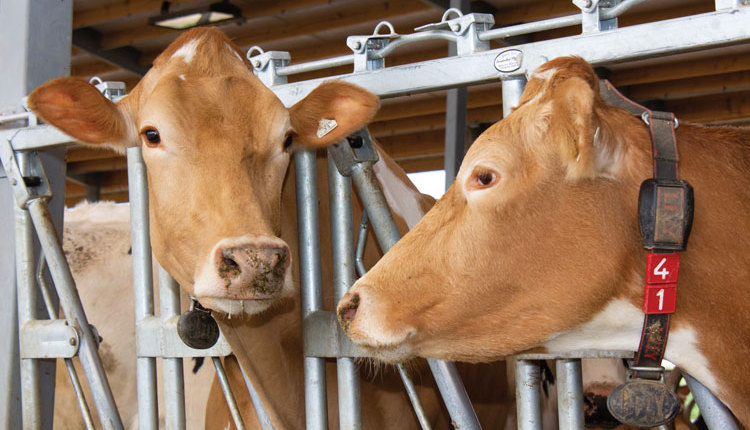The authors are a professor at the City University of Hong Kong and a professor at Colorado State University, respectively.

Earlier detection of disease allows for timely corrective measures and reasonable implementation of treatment. This leads to less intense disease, quicker returns to health, and more precise and appropriate decisions such as culling.
Innovative tools, often called “precision dairy technologies,” aim to maximize cow responses by improving early disease detection and reducing the use of pharmacological medications, mostly antibiotics.
As these technologies have become more accessible to producers, the interest in maximizing surveillance through these novel tools, both at the individual and the herd level, has grown. As a result, this technology can complement the labor and skill of human resources on dairy farms.
An objective viewpoint
Follow-up of health conditions on dairy farms has been traditionally performed through daily examinations of individual cows. Most of these activities are carried out by farm personnel who have been trained by the attending veterinarian. However, research consistently suggests that most criteria used to identify sick cows are subjective, and only a few tools, such as rectal temperature and ketone body determination, are objective indicators of disease.
In this sense, automated monitoring technologies have been developed to enable the measurement of more objective physiological, behavioral, and productive indicators at the individual and herd levels. Some examples include individual electronic milk meters, complemented with milk urea, solids, and ketone body determination, heat detection electronic devices, activity and rumination sensors, and automatized disease and animal welfare alert systems.
Deviations from normal animal behavioral patterns are analyzed, including the rumination time, feed intake time, and levels of physical activity, measured through neck movements, the number of steps walked, or the time the animal spends lying down or standing. Real-time behavior data enables the identification of individuals deviating significantly from normality or baseline standards.
Various monitoring technologies are available, including accelerometers for activity assessment, microphones for rumination-related sounds, and sensors for milk production, conductivity, body temperature, weight, body condition, ruminal pH, and more. The ability to detect subtle variations in physiological parameters indicative of discomfort, improper management, or illness is invaluable for identifying and managing cows at the onset of health events. Noteworthy examples include alterations in rumination, feed intake, and activity associated with events like calving, metabolic disorders, lameness, and uterine diseases. Similarly, changes in milk components and elevated electrical conductivity have been linked to certain metabolic disorders and mastitis detection, respectively.
Watching body condition
Recent advancements include cameras capable of automatically assessing cows’ body condition score (BCS). As we know, BCS has been a useful tool to assess energy nutrition and energy balance of cows at different levels of their production cycle. Nonetheless, the traditional methodology, accomplished by visual assessment of certain areas of the body of the cow, is time consuming and somewhat subjective.
Some companies have developed cameras for BCS that are positioned in high-traffic areas, typically at the exit of the milking parlor, so that cows receive a score each time they are milked. The camera information is transferred directly to the dairy management program. The most obvious advantages include savings in personnel use and the availability of more objective measurements with daily values throughout the lactation.
This technology opens the potential for real-time monitoring of the effect of certain diets or management practices on body reserves, the estimation of changes in BCS between two-time points as a proxy of the energy balance of individuals or groups of cows, and provides resources for the indirect assessment of health and welfare of the herd that will impact fertility and milk yield.
Interestingly, two studies that we recently presented at the American Dairy Science Association’s annual meeting analyzed retrospective data obtained from an automated BCS camera system from 12,042 lactations in 7,626 Holstein cows on a U.S. dairy. One of the studies reported that subclinical ketosis, defined as blood BHB levels greater than or equal to 1.3 millimole per liter, was more common in cows with lower nadir postpartum BCS and greater loss of BCS from calving to nadir.
The second study reports that greater BCS at dry-off and higher loss of BCS from dry-off to calving were associated with greater subsequent presentation of subclinical ketosis. In addition, greater BCS at calving was partially associated with the incidence of ketosis, which is a disease that strongly predisposes cows to develop displacement of the abomasum and other health disorders.
In this population of cows, 24.7% surprisingly lost BCS from dry-off to calving, while 75.3% of the cows gained or maintained the same BCS during the dry period. We wonder how many herds know about the dynamic of BCS during the dry period. Undoubtedly, this information is extremely valuable for the producer to make effective decisions in the control and management of BCS of the herd during the entire production cycle, especially during the second half of lactation.
These types of technologies may be more accessible for larger dairy herds because of the cost of the system while small dairies may still depend on individual animal daily evaluation by the personnel. However, precision dairy technology is a tool that has come to transform the dairy industry in terms of optimizing animal health, well-being, and performance.









